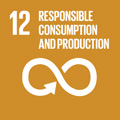- Docente: Maria Semi
- Credits: 6
- Language: Italian
- Teaching Mode: Traditional lectures
- Campus: Bologna
-
Corso:
First cycle degree programme (L) in
Drama, Art and Music Studies (cod. 5821)
Also valid for First cycle degree programme (L) in Drama, Art and Music Studies (cod. 5821)
-
from Feb 11, 2025 to Mar 21, 2025
Learning outcomes
By the end of the course the student: knows on a general basis the problems and challenges that music, understood as a science and as an art, as abstract form and signifying medium, posed to Western philosophical thought; is introduced to concepts and periods of crucial relevance to the history of musical aesthetics; is able to place in time and space some of the major questions that haunted the discipline.
Course contents
This unit's focus is on the uses of music and sound in the societies we live in. First we will introduce several concepts, developed by philosophers, that will become our tools to interpret the world we live in: in particular we will deal with the 'aestheticisation of the world', with 'aesthetic capitalism'(Gernot Böhme) and with 'everyday aesthetics' (Yuriko Saito). Secondly we will focus on the cultural relativity of our sensory and acoustic perceptions. With the help of sound studies and of the theories of soundscapes, we will examine how in the Twentieth-century natural sounds and ambient sounds have begun to be understood and categorised in a different way. Our last focus will be on sounds in an urban context.
Our aim is to develop a critical awareness to phenomena that regard our everyday lives (with a particular focus on the sonic environment), and that often go utterly unnoticed.
Students with SLD or temporary or permanent disabilities. It is suggested that they get in touch as soon as possible with the relevant University office (https://site [https://site/] .unibo.it/tudent-con-disabilita-e-dsa/en) and with the lecturer in order to seek together the most effective strategies for following the lessons and/or preparing for the examination.
Readings/Bibliography
- Elisabetta di Stefano, Che cos’è l’estetica quotidiana? (Carocci 2017, 2019)
- Paesaggi sonori. Musica, voci, rumori: l’universo dell’ascolto, ed. by Michael Bull and Les Back, Milano, il Saggiatore, 2008, pp. 195-247 (Parte Quarta: Suoni della città) [international students may also use the original English version].
- Course lecture notes and additional material will be available on Virtuale as a PDF file called "Dispensa". The additional material includes:
- Jennifer Stoever-Ackermann, W.E.B. Du Bois e la linea del colore sonora, «Studi culturali», 1, 2013.
- Antonella Radicchi, Sull’immagine sonora della città, Firenze, Firenze University Press, 2012.
- Elena Biserna. Verso un’espansione di campo. Musiche e ascolti peripatetici negli anni '60, in Sonic Arts. Tra esperienza percettiva e ascolto attivo, ed. by Caterina Tomeo, Castelvecchi, 2019, pp.91-110.
Teaching methods
Lecturing, discussion, group work
Assessment methods
Students will have to answer three open questions relating to the books and the materials of the bibliography in 2 hours time.
If the student has to obtain 12 CFU with this exam, he/she will also have to write a paper (max 2000 words, A4, single-spaced, Times New Roman 12) either on a topic related to the assigned readings, or on a more specific case-study (to be agreed with the teacher). Students are warmly invited to write me in order to discuss the paper's topic before submitting it.
ATTENDING STUDENTS
Students attending the part "LABORATORIO" can also deliver an individual or group presentation of a concrete case study to be formerly agreed with the teacher instead of writing the paper assignment.
Erasmus students and others having only 6 CFU to obtain from this exam DO NOT NEED TO WRITE THE PAPER ASSIGNMENT.
Students with SLD or temporary or permanent disabilities. It is necessary to contact the relevant University office (https://site.unibo.it/studenti-con-disabilita-e-dsa/en) with ample time in advance: the office will propose some adjustments, which must in any case be submitted 15 days in advance to the lecturer, who will assess the appropriateness of these in relation to the teaching objectives.
Assessment:
EXCELLENT: students achieving an organic vision of the course contents, the use of a proper specific language, a structural and historical-contextual understanding of the studied works, the originality of the reflection
AVERAGE: mechanical or mnemonic knowledge of the subject, not articulated synthesis and analysis capabilities, a correct but not always appropriate language,
BARELY SUFFICIENT: students with minor learning gaps, use of inappropriate language
INSUFFICIENT: major learning gaps, inappropriate language, incomplete reading of the compulsory books.
Teaching tools
Audio, video, materials shared on Virtuale
Office hours
See the website of Maria Semi
SDGs




This teaching activity contributes to the achievement of the Sustainable Development Goals of the UN 2030 Agenda.
